What time is it in Mykonos Greece?
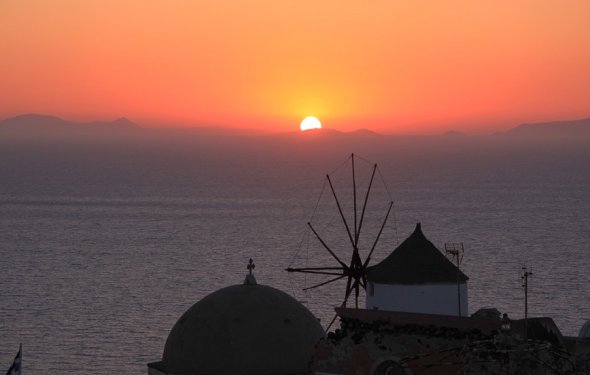
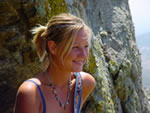
Doing “As Little As Possible”...And Somehow Also as Much
By Julia Reynolds
| The town in Mykonos, Greece in all its iconic glory.
I wake in my cool, damp little concrete room and for a moment watch the sunlight painting pictures on the walls, diluted and fractured by the heavy grape vine that obscures most of the single window. I rise, stretch and step out the door of the room I rent in a 200-year-old expanded shepherd shack and walk around to the front of the cottage, as I do every morning, to stare out at the picturesque sprinkling of white confetti houses, red-roofed churches, endless ancient stone walls on rolling hillsides, and the panoramic embrace of the vivid turquoise Aegean Sea that convince me, despite my mind's reluctance to accept my good fortune, I do in fact live on a tiny island in Greece. It is winter and work is scarce on Mykonos, an island which is approximately 45 square miles and is 95 miles from Athens, known for its cosmopolitan glamour and vibrant nightlife in the high season as much as the gorgeous stretches of golden sand beaches. It is December now and the crowds have long gone, leaving the island free of the noisy blanket of beeping scooters and clustered crowds struggling to make their way through the streets of the diminutive Hora (town), but by no means bereft of life. I have decided to adopt my British housemate’s philosophy who, whenever asked what he does for a living replies: “As little as possible.” I have picked up odd jobs and temporary work catch-as-catch-can throughout the slow season, and the last few weeks I have been painting a hotel overlooking the new port with an all-male, all Greek and Albanian work crew. Boats moored off of a port in Mykonos. After breakfast my effortlessly sexy tousle-headed co-worker George picks me up on his motorcycle and we drive to the hotel together for another day of unbelievably relaxed labor, punctuated with numerous coffee and cigarette breaks and an extended mid-day meal with a couple of carafes of wine. We work five or six hours and I expand my Greek vocabulary day by day, learning words for objects like paint thinner and doorknob. Back at home, around six in the evening the main event of the day takes place as the entire island catches its breath, walks outside to balconies, doorsteps, and yards, and watches the sky perform a visual symphony of furled ribbons of violet and vast swathes of coral and gold. Winter sunsets in Greece defy the imagination, leaving their audience in awe for 15 minutes each evening. I moved to Greece on a whim in 2006 after falling in love at first sight with the islands of the Cyclades and thereafter the rest of the country. The day I laid eyes on Mykonos will be imprinted in Technicolor detail on my memory for all time. Here was this tiny whitewashed town clustered in gleaming rows of blue and white around the fishing boat filled harbor. The colors and the quality of the light are what I remember most about that moment, blue and white, and blue and white, as far as the eye could see. It was a town both antique and dazzlingly new, its narrow, labyrinthine passages hardly deigning to be called streets so enchanting were they in their bougainvillea-drenched mystery. It was like a town from a childhood dream I had long forgotten, where giant pelicans wandered the paths, and old women in black fed long lines of stray cats. And the light…my impression was that the light itself was alive, harsh in its intensity yet soothing in its warm caress on the skin. It danced on the water, amongst the cool concrete structures, on the windows of the tavernas, penetrating every crevice, making every reflective surface a beacon. The colors saturated one’s brain, so much so that behind the lids of closed eyes the blues turned violet and the bright whites left dilating rings. That moment revealed to me the possibility of a new life. I was entranced with all the Greek islands had to offer, the myriad of visual and visceral delights; the generosity of strangers; a cuisine based around the olives harvested from the trees, the bounty of the sea, produce that knew no pesticide; the language that to me at the time was as foreign and unfathomable as Arabic; and a lifestyle based on the premise that nothing could not be put off until after lingering over coffee in the morning, or until after a long lunch in the sunshine on the beach sipping white wine, or maybe simply until avrio (tomorrow). It was the little things that are hard to pinpoint as well, like noticing the warm air of camaraderie surrounding the fishermen in black hats clustered in the harbor front clicking worry beads, or sitting at a table in Kiki’s Taverna by Agios Sostis with no electricity overlooking a hidden jewel of a beach with a tree growing in the middle of the dining room, all the food being cooked on a clay grill and five languages being spoken at the same table. I learned that even physical gestures have different meanings in different languages, such as a “tsk”ing sound accompanied by a subtle uplift of the chin in Greek means “no”. A hand gesture that to me appeared more like “go away” in my own culture actually beckoned “come here” in Greece. The language, as it slowly unraveled its complicated grammar and foreign alphabet to me after months and months of pouring over dictionaries, phrase books, language programs, and day to day life, revealed perfectly descriptive colloquialisms and words for thoughts, emotions and qualities that we simply don’t have in English. On a day when the strong south wind caused little ripples of white water undulating in the surrounding waters, they would say “Ee thalassa ekee arnakia, ” which translates to mean there are little lambs in the sea, and damned if it didn’t look exactly like that. The Greek girls with whom I worked in a beachfront taverna later that year were shocked to hear that in English we don’t have a specific word for the floor of the sea. I pondered it for awhile, but still could only repeat, “No, I’m pretty sure we just call it the floor of the sea”, somewhat abashedly. I left Mykonos in 2008 for five months of traveling through Australia, New Zealand, and Southeast Asia, and when I returned it felt smaller, less exciting perhaps, and I was working seven days a week for about ten hours a day at a restaurant. I still had time to myself in the mornings, when I would walk to Paranga Beach, take a long swim, and write in my notebook for an hour or two before work, but I didn’t feel as creatively inspired or as intellectually stimulated as I had before, most of my daily conversations being limited by a persistent language barrier. I may have been able to hold a good conversation with my co-workers, but we definitely weren’t sharing our hopes, fears, and aspirations with one another in any language. As I observed the misogynistic practices in the restaurant, such as certain tasks being always delegated to the men, and others delegated only to the women, I found myself increasingly frustrated and eventually ended my employment there and left the island once more to travel around Europe and collect my thoughts. Sunset on the small iconic island of Mykonos, Greece. On Saying Farewell |
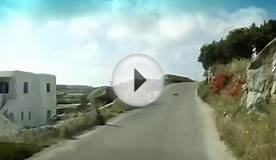
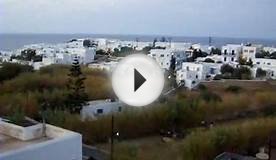
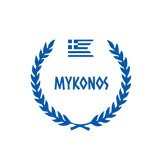
|
MYKONOS Car Decal Laptop Wall Sticker Automotive Parts and Accessories (Shirt Mania)
|